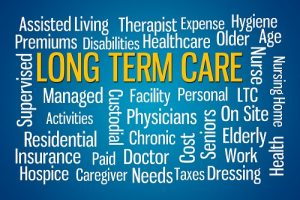 Written by Veronica Turner
Written by Veronica Turner
Navigating the dynamic landscape of healthcare requires a nuanced blend of clinical competence, adaptability, and a persistent focus on patient satisfaction.
As medical professionals, your role isn’t confined to just diagnosing ailments and prescribing treatments. You’re the guiding force leading patients through their healthcare journey, making it as seamless and comfortable as possible. This process is also called the patient journey.
This article provides numerous top tips designed to help you rise to these challenges.
By adopting these strategies, from enhancing tech-savviness and promoting self-management to adopting patient-centric approaches, you can revamp the patient experience in your practice.
But first, we have to examine how the patient journey impacts the patient experience.
What is the Patient Experience?
Patient experience refers to interactions that the patient encounters throughout the healthcare journey. This includes interactions with nurses, doctors, healthcare staff, and facilities.
When we look at multiple aspects of the patient experience, we can assess whether patients are receiving respective, responsive, and individual care based on their needs and values. There are many ways that healthcare professionals can monitor and assess the client’s experience.
One way they’re doing this is through the use of technology and automation. For example, similar to how a peer-to-peer employee recognition platform improves your employee’s experience, healthcare apps like Practo improve the patient through doctor feedback.
Why Does Patient Experience Matter?
Here are a few reasons why patient experience matters:
- Higher Patient Satisfaction: Patients who receive timely support and complete respect are more eager to follow plans from their doctors, thus increasing their satisfaction.
- Improves Health Outcomes: when patients engage with their care team, they feel more confident about the treatment approach. Their compliance leads to better outcomes.
- Increases Your Bottom Line: Happy patients are more likely to come back to your healthcare facility. Therefore, your bottom line will increase drastically.
- Boosts Your Online Reputation: According to the National Research Corporation, there’s a link between a great patient experience and an improved online reputation.
When the patient journey is seamless, patient experience and satisfaction increase. However, it’s important to note that patient experience and patient satisfaction aren’t the same thing.
Patient experience is measured by the insights gained from patients, whereas patient satisfaction demonstrates to what extent their needs are fulfilled. Improving both is important to improve the health and wellness of your patients, so don’t focus on one and not the other.
How to Revamp the Patient Journey
Now that you know how patient experience is impacted by the patient journey, we can start creating one that works for your facility. Here’s how to revamp the patient journey.
Remove the Barriers in the Patient Journey
Transforming a patient’s healthcare journey requires removing potential barriers. Make information about appointments, procedures, and care plans easily accessible and understandable. Optimize wait times and foster an environment where patients feel heard.
Ease out complex procedures and streamline administrative tasks with technology. Incorporate regular check-ins post-treatment to ensure a continuous link of communication and trust. Every barrier you remove is a step towards personalized, dignified, and empowering care.
Make Efforts to Provide a Personal Touch
In healthcare, the personal touch really matters. It’s beyond just knowing a patient’s medical history. It’s about understanding their desires, fears, and lifestyle. Utilize patient interactions as an opportunity to connect on a deeper level. Do this through active listening and empathy.
Small but meaningful gestures can make a significant difference. For example, you might try remembering specific personal details they share or expressing sincere concern for their wellbeing. A personalized approach shows that you see your patients as individuals first.
Use Patient Engagement Software and an EHR
These modern tools facilitate interactive communication with your patients, streamline administrative tasks, and ensure a smooth continuum of care. EHRs specifically play a vital role in improving patient outcomes by creating easily accessible and organized medical histories.
Meanwhile, engagement software can send out automated reminders for appointments or medication refills. Embracing these innovative technologies will not only enhance your practice’s efficiency but will also greatly improve your patient’s healthcare experiences.
Offer Online Appointment Booking
Providing an online booking option is a step forward in enhancing patient convenience. This feature enables patients to schedule their visits at their convenience without the hassle of long waiting times on the phone. It becomes very useful for non-urgent medical inquiries.
By integrating this option into your practice’s website or patient portal, you ensure ease of access and keep pace with the digital age’s expectations. It also optimizes your administrative tasks and increases overall efficiency and productivity within your healthcare practice.
Automate what Can be Automated
Automation is key to minimizing mundane tasks and maximizing efficiency in the healthcare sector. Various administrative tasks like registration, appointment scheduling and reminding, billing, and even prescription refills can benefit from automation.
Utilizing software for these processes saves time and greatly reduces the chance of errors. This increased efficiency allows medical professionals more time to focus on patient care. It’s about working smarter, not harder, and ultimately leading to a better patient experience.
Gather and Utilize Data Insights
In an era of data-driven decisions, harnessing the power of data can optimize your practice. Systematically collect, analyze, and interpret patient data to gain insights into their needs and behaviors. EHRs, patient surveys, or wearable tech provide a treasure trove of such data.
Leveraged effectively, these insights can guide tailored service delivery and preventive healthcare strategies, improving patient engagement and satisfaction overall. Incorporating this approach propels your practice towards evidence-based care that is personalized yet effective.
Have a Patient-Centric Culture
Imbibing a patient-centric culture within your practice is crucial for revamping the patient journey. This approach prioritizes the needs, expectations, and experiences of patients above everything else. It underscores empathy, active listening, communication, and shared decision-making.
By shifting from disease-focused to patient-focused care, you emphasize treating the person as a whole rather than just addressing their symptoms. This cultural shift positively affects your practice’s operations and clinician-patient relationships, leading to enhanced patient satisfaction.
In Conclusion…
Embracing these top tips in your medical practice marks the beginning of an enhanced patient journey. Each small step you take to focus on patient care can have profound effects. Start by identifying potential barriers, then systematically address them using tech advancements and empathetic approaches. Use every opportunity to connect with patients on a personal level.
Author Bio:
Veronica Turner is a health and lifestyle writer with over 10 years of experience. She creates compelling content on nutrition, fitness, mental health, and overall wellness.
Please also review AIHCP’s Case Management Certificate program and see if it meets your academic and professional goals. These programs are online and independent study and open to qualified professionals seeking a four year certification.







 Written By: Dominick L. Flarey, Ph.D., RN-BC, NEA-BC, FACHE
Written By: Dominick L. Flarey, Ph.D., RN-BC, NEA-BC, FACHE Compliance to Health Care Management
Compliance to Health Care Management

